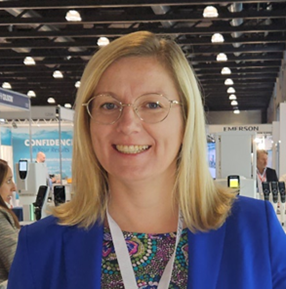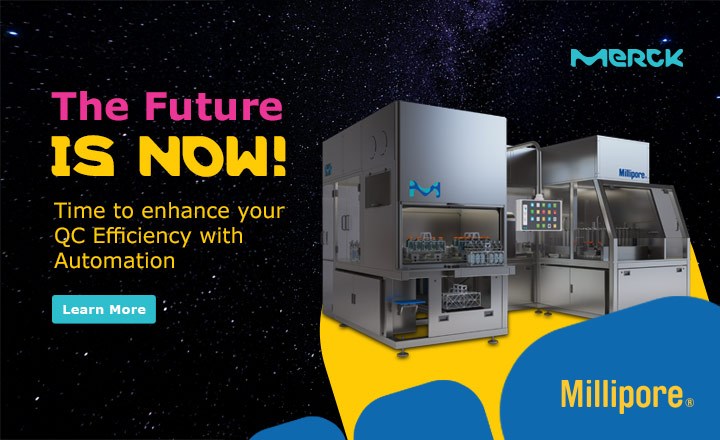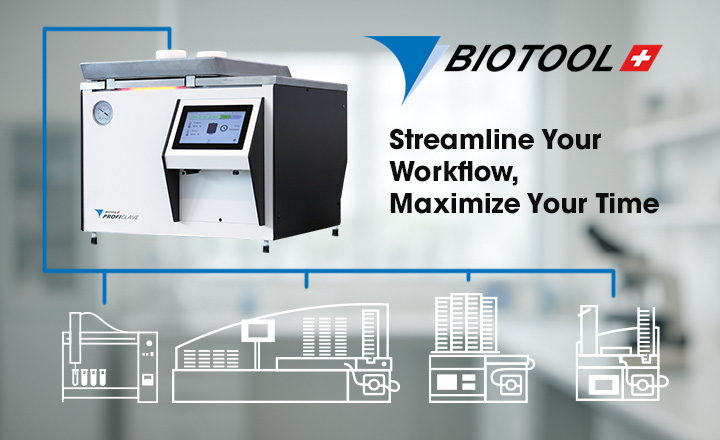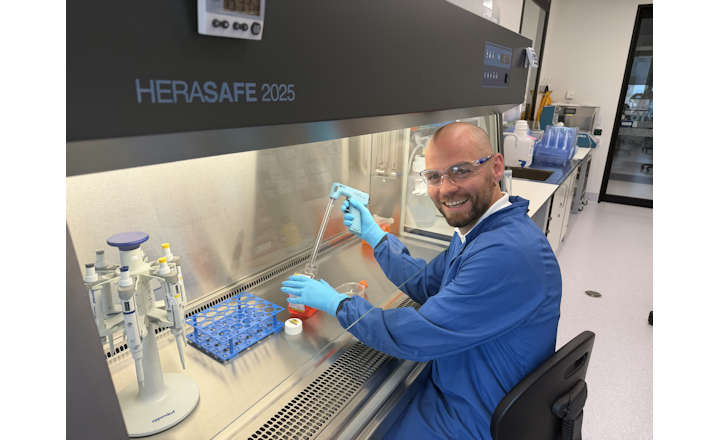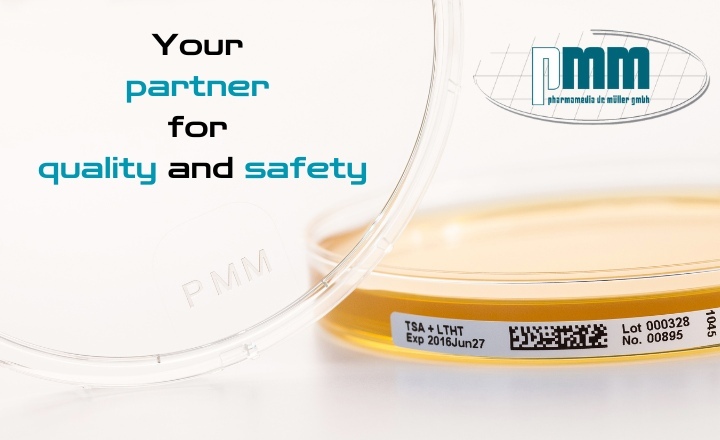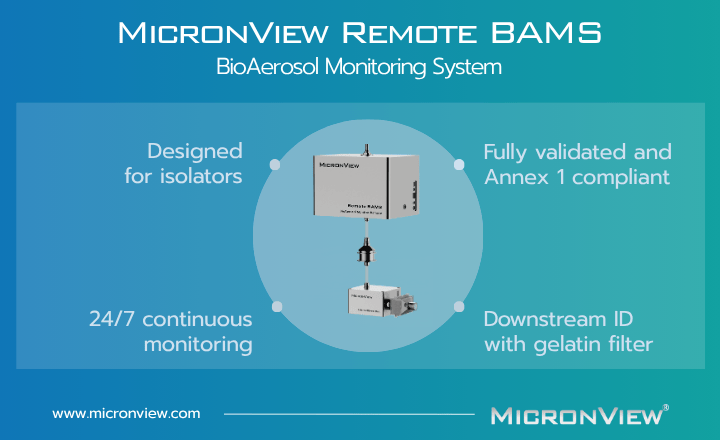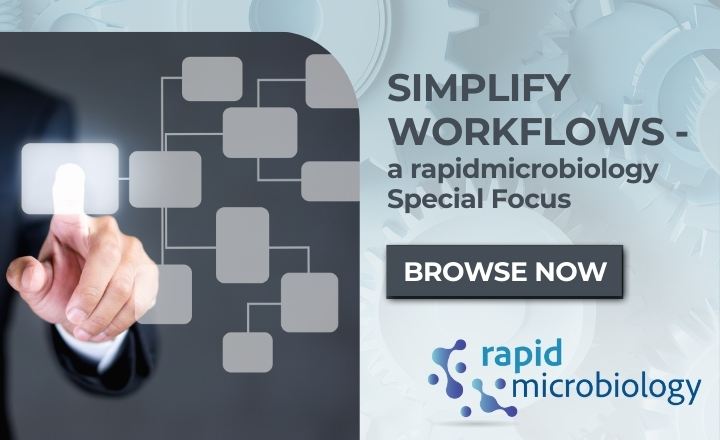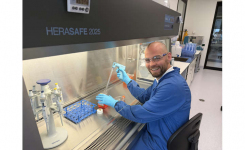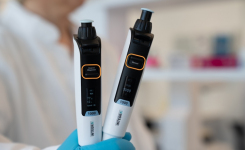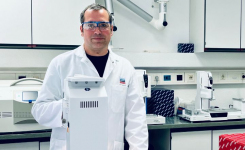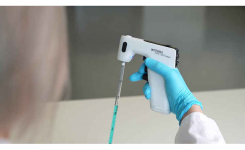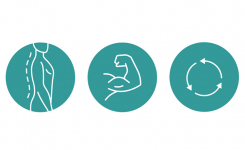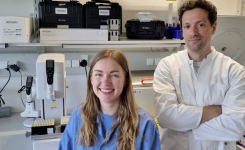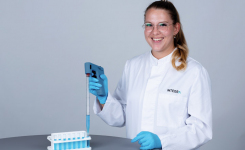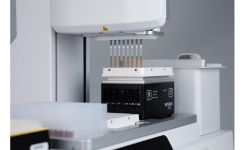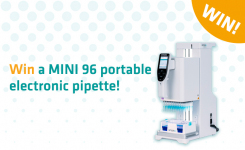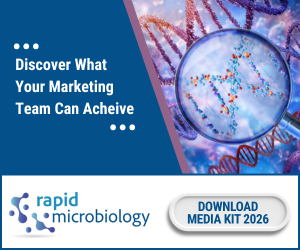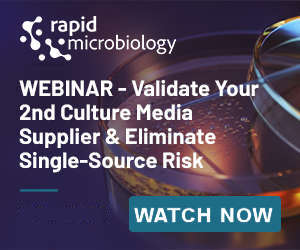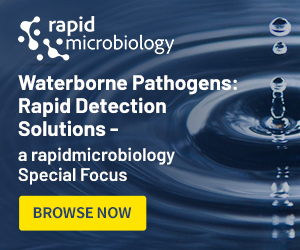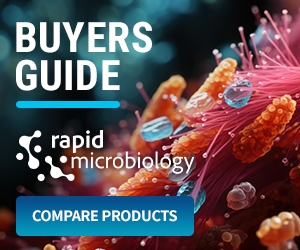Microbiology workflows generally involve numerous manual steps, from media preparation and culture handling to molecular processes such as nucleic acid extraction, library preparation, and quality control for sequencing. However, each stage is prone to human errors and variability, which can slow progress and compromise reproducibility. In this interview, Dagmara Lewandowska, Product Manager at INTEGRA Biosciences, explains how smarter media preparation and automation tools are helping labs to reduce errors, simplify processes, and accelerate the shift from traditional microbiology to streamlined genomics pipelines.
Q: Why is workflow simplification such an important theme for microbiology labs today?
Dagmara: Many microbiology labs still rely heavily on manual procedures, which can be time-consuming and error-prone. The more manual touchpoints in a workflow, the higher the risk of inconsistent results. Simplification is about reducing those touchpoints to make processes faster and more reproducible. At INTEGRA, we focus on producing compact tools that integrate easily into existing workspaces and can be scaled up as needs grow. This approach enables labs to save time and boost throughput without needing to invest in large, complex robotic systems.
Q: Let’s start at the foundation. How does INTEGRA help with media preparation?
Dagmara: Starting with a reliable culture is crucial, because everything that follows depends on it. The MEDIACLAVE 10/30 media sterilizer allows labs to prepare 1 to 30 liters of sterile agar or broth with precisely controlled time, temperature and pressure. Built-in stirring ensures homogeneity, while rapid cooling helps to preserve the fertility of the medium. Together, these features reduce batch-to-batch variability and ensure that every culture begins under consistent conditions.
The MEDIAJET Petri dish filler offers true walk-away automation for the plate preparation stage. It can process up to 1,100 Petri dishes per hour, with a built-in UV lamp to maintain sterility throughout. The system accommodates various dish sizes as well as tubes, making it adaptable for a range of microbiology workflows. By combining MEDIACLAVE and MEDIAJET, labs can achieve reproducible media preparation and consistent Petri dish filling, minimizing contamination risks and establishing a standardized starting point.
Q: Why is consistent media preparation so important for downstream genomics applications?
Dagmara: Consistency in media preparation directly impacts downstream analyses. Uniform plates generate cleaner colonies, reducing the risk of mixed or contaminated samples entering molecular workflows. You’re then working with pure cultures when you move into nucleic acid extraction and sequencing, which makes the data far more reliable. This reliability is essential for applications such as identifying antibiotic resistance genes, detecting virulence factors, or carrying out whole genome sequencing.
Q: Sample preparation often starts with reformatting samples. How can labs save time at this step?
Dagmara: Sample preparation often involves aliquoting or reformatting–transferring material from tubes into plates, or between different plate formats – so that samples are ready for nucleic acid extraction or long-term storage. It’s a routine but surprisingly time-consuming step.
The VOYAGER adjustable tip spacing electronic pipette makes this process easier, with motorized tip spacing at the touch of a button, enabling parallel transfer of multiple samples between different labware formats. Pairing the VOYAGER with the ASSIST PLUS pipetting robot takes this efficiency even further, allowing the entire reformatting process to be carried out hands-free. The same system can also handle serial dilutions and aliquoting, creating an easy entry point into automation without the need for large robotic platforms.
Q: What are INTEGRA’s options for nucleic acid extraction?
Dagmara: Once samples have been reformatted, the next critical step is the extraction of high-quality nucleic acids. This stage is among the most challenging in any molecular workflow, because it is labor-intensive and involves multiple wash and transfer steps, each of which can introduce errors, variability or cross-contamination. Achieving high purity and yields while maintaining throughput is particularly difficult when these processes are performed manually. To address these challenges, INTEGRA offers solutions supporting both magnetic bead-based and silica column-based extraction methods.
Our MAG and HEATMAG modules streamline magnetic bead-based nucleic acid extraction, with powerful magnets that move up and down automatically to ensure efficient bead collection and cleaner supernatant removal. The HEATMAG module also offers heating up to 65 °C to enhance lysis and elution. These modules can be fully integrated with the ASSIST PLUS for walk-away convenience, or paired with a VIAFLO 96 or VIAFLO 384 handheld electronic pipette for high-throughput, semi-automated plate-based extraction.
For labs that prefer silica column workflows, the VOYAGER can simplify buffer transfers into spin columns or 96-well silica plates, while the VIAFLO 96 and VIAFLO 384 can process whole plates in parallel. We also support vacuum manifold-based protocols, which can be semi-automated to save time while maintaining consistency.
Q: PCR and qPCR set-ups remain central in many labs. How can INTEGRA support these workflows?
Dagmara: PCR and qPCR are fundamental microbiology techniques, but setting up these workflows manually can be repetitive and error-prone. Using the ASSIST PLUS in combination with the D-ONE module allows labs to automate these processes by adding master mixes, primers, and samples consistently across all wells. INTEGRA also offers accessories like the COLDPLATE cooling module and cooling blocks to keep reactions chilled before they go into the thermocycler, protecting temperature-sensitive reagents. These small additions ensure sample integrity and help labs transition into automation without needing to overhaul their existing PCR workflows.
Q: PCR purification is another bottleneck. How can INTEGRA help here?
Dagmara: PCR amplification is essential, but purification afterward is often slow and error-prone. MAGFLO™ PCR magnetic beads* offer a fast, straightforward way to clean up PCR reactions, removing residual primers, nucleotides, and enzymes while delivering high amplicon recovery. At the same time, the MAG module provides faster, more reliable bead capture than static magnetic stands, making it easier to aspirate supernatants without disturbing the pellet to reduce the risk of sample loss. Purification can be fully automated with the ASSIST PLUS for walk-away runs, or scaled up with the VIAFLO 96 or VIAFLO 384 for high-throughput processing of full plates.
For labs still using spin column protocols, our solutions also save time. The VOYAGER and VIAFLO 96 and VIAFLO 384 make it possible to transfer buffers into columns or silica membrane plates in parallel, avoiding the need for repetitive single-channel pipetting.
Q: How about NGS library preparation and quality control?
Dagmara: After extraction, nucleic acids need to be prepared for sequencing in library prep protocols. Our MAGFLO™ NGS magnetic beads* integrate seamlessly with the MAG or HEATMAG modules and the ASSIST PLUS to provide streamlined, hands-free clean-ups and size selection steps for NGS library workflows, ensuring consistent fragment sizes to be obtained for each sample prior to sequencing. Automation of liquid handling steps improves reproducibility and eliminates the variation that is normally observed in manual workflows, enabling high-quality results.
Q: Normalization and pooling require precision. How can automation make these processes more reliable?
Dagmara: These final library preparation steps are crucial because even small errors can compromise an entire sequencing run. The D-ONE module on the ASSIST PLUS brings the accuracy needed for these critical processes. It offers two interchangeable volume ranges – 0.5 to 300 µl and 5 to 1,250 µl – with automatic tip selection and liquid level detection.
Instead of manually calculating and transferring volumes, you can simply import your concentration data into VIALAB pipette automation software. The system’s built-in dilution calculator then determines the required volumes and performs the transfers automatically. This hands-free approach eliminates transcription errors, speeds up program set-up and ensures consistent pipetting across all samples. The result is a faster, more reproducible workflow and greater confidence in the accuracy of sequencing results.
Q: What’s your advice for labs that want to adopt automation gradually?
Dagmara: The key is to not try and automate everything at once. A VOYAGER pipette is often the first step, as it speeds up reformatting and transfers without changing existing workflows. From there, adding the ASSIST PLUS lets you perform those same steps hands-free. Introducing MAG or HEATMAG modules comes next to handle nucleic acid extraction and PCR clean-up. If throughput needs increase, moving to the VIAFLO 96 or VIAFLO 384 lets you process whole plates at once. Each stage builds on the last, so automation grows in line with the lab’s needs and resources.
Q: Finally, what’s your advice for labs starting to move from traditional culture-based microbiology methods to genomics?
Dagmara: The most important thing is to build on strong foundations – such as clean and consistent media prep and plating – then to automate the steps most vulnerable to error, such as reformatting, bead clean-ups, and normalization. Start small, validate each stage as you go, and scale up when you’re ready. That way, you’ll gain speed and reproducibility without losing control, setting your lab up for success in modern genomics.
Discover INTEGRA Biosciences, smarter media preparation and automation tools.
* MAGFLO beads are currently available in selected countries only. Please check local availability.
About Dagmara Lewandowska - Product Manager, INTEGRA Biosciences
